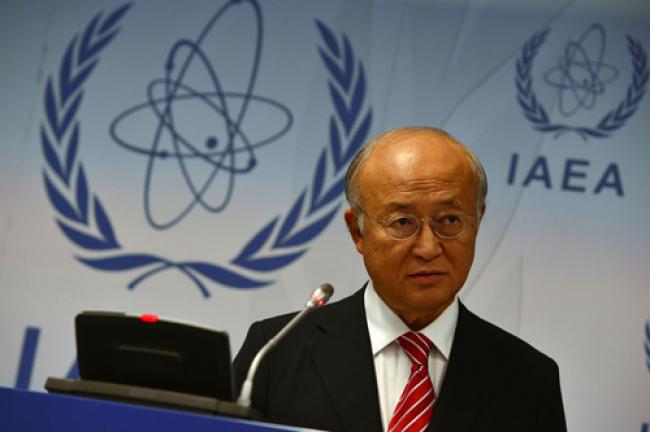Environment/Science
Environment/Science UN atomic agency continues operation of peaceful pursuit
06 Nov 2013, 12:48 pm Print

New York, Nov 6 (JEN): From helping developing countries provide cancer treatment to verifying the non-diversion of nuclear material for military purposes, the United Nations atomic watchdog agency continues to pursue its goal of promoting safe, secure and peaceful nuclear technologies.
In his presentation to the General Assembly, the Director General of the International Atomic Energy Agency (IAEA) recalled that it is now nearly 60 years since United States President Dwight Eisenhower gave his historic ‘Atoms for Peace’ speech to the UN body and called for the establishment of an international atomic energy agency to put nuclear material to use to “serve the peaceful pursuits of mankind.” Four years later, in 1957, the IAEA began work in Vienna.
“Since then, the Agency has worked hard to bring the benefits of peaceful nuclear technology to all parts of the globe and to prevent the spread of nuclear weapons,” said Yukiya Amano.
“The world has changed enormously in that time. But the ‘Atoms for Peace’ mission has lost none of its relevance. The Agency has successfully adapted to changing times and the evolving needs of Member States.”
In the area of nuclear technology, the Agency, together with the World Health Organization (WHO), is helping to make radiotherapy, medical physics, nuclear medicine, and imaging services available to developing countries.
While cancer is reaching epidemic proportions in developing countries, many of them do not have the resources to deal with it, Amano noted. Several dozen African nations have no radiotherapy facilities at all. Among the Agency’s flagship activities is the Programme of Action for Cancer Therapy (PACT).
“But our efforts are just a drop in a vast ocean of human suffering. The world needs to mobilize its resources against cancer in a systematic way,” he stated, adding that the crisis must be addressed with a multi-pronged global effort to build awareness, develop diagnosis and treatment centres and train medical professionals.
In addition, the IAEA is working closely with African nations to suppress tsetse flies, which infest vast areas of the continent and transmits a parasitic disease that devastates livestock herds and spreads “sleeping sickness” among humans.
On nuclear verification, Amano voiced serious concern about the nuclear programme of the Democratic People’s Republic of Korea (DPRK).
“The DPRK’s statements concerning a third nuclear test and its intention to restart its nuclear facilities at Yongbyon, together with its previous statements about uranium enrichment activities and the construction of a light water reactor, are deeply regrettable,” he stated.
The Agency has not been able to implement any verification measures in the DPRK since April 2009, he added.
The Director-General noted that the IAEA continues to verify the non-diversion of nuclear material declared by Iran, but is unable to provide credible assurances about the absence of undeclared nuclear material and activities. “The Agency therefore cannot conclude that all nuclear material in Iran is in peaceful activities.”
Last week, a “productive” meeting addressing past and present issues related to Iran’s nuclear programme took place in Vienna, during which the country presented a new proposal on practical measures as a constructive contribution to strengthening cooperation and dialogue with a view to the future resolution of all outstanding issues. A further meeting is set for 11 November in Tehran.
Iran’s nuclear programme – which its officials have stated is for peaceful purposes, but some other countries contend is driven by military ambitions – has been a matter of international concern since the discovery in 2003 that the country had concealed its nuclear activities for 18 years in breach of its obligations under the Nuclear Non-Proliferation Treaty (NPT).
IAEA Director General Yukiya Amano. Photo: IAEA/Dean Calma
More Environment/Science
- Rain-related incidents in Pakistan's KP leave 21 dead
- Heavy rains and floods disrupt normal life in Dubai, flights diverted
- NOAA scientists say coral reefs undergoing fourth global bleaching event
- Skygazers stunned as they witness total solar eclipse in the US, Mexico, Canada amazed
- Total Solar Eclipse to occur on April 8, NASA shares safety guidelines for viewing the event






